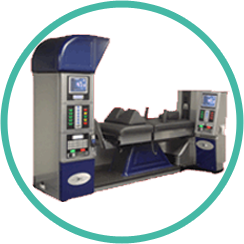Migraine headaches, Kennedale‘s Dr. Dale Sandvall would like you to know, aren’t just a pain in the brain. They’re often an indicator that something more serious is wrong, and deserves your attention.
Look at this list of things known to cause migraine headaches, taken from MayoClinic.com:
<blockquote>
It might seem at first glance that there’s isn’t a lot of similarities in the items on that list, but look deeper. Consider: research has recently shown that salt can have effects on the brain similar to that of cigarettes or cocaine, causing a rush of dopamine, a neurotransmitter than makes you feel ‘up.’
We’ve known since the 60s that tyramine (in aged cheese) causes your brain to release norepinephrine, a fight-or-flight neurotransmitter. Aspartame and MSG are both in the class of chemicals called ‘excitotoxins’ that overstimulate neurons and thus the release of neurotransmitters including dopamine. Alcohol and caffeine both stimulate the release of dopamine; stress triggers norepinephrine; sensory overstimulation can release both norepinephrine and dopamine…you get the idea.
Or In Case You Didn’t…
The idea is that literally every one of the common triggers of migraine headache triggers one of a very short list of neurotransmitters that is directly attached to the process of stimulating your brain — either positively (in the ‘high’ of a dopamine rush) or negatively (in the ‘panic’ of a norepinephrine rush).
The connection between norepinephrine and dopamine can be found in their relationship with a third chemical — serotonin. Serotonin’s function in the brain can largely be summarized as “modulating the way neurons response to dopamine, epinephrine, and norepinephrine.” Serotonin levels, then, are directly relevant to dopamine and norepinephrine levels.
So it should come as no real surprise that recent research has proven that low serotonin levels are powerfully associated with the likelihood of a migraine headache. In practical terms, if you want to avoid a migraine, keeping your serotonin levels balanced is almost certainly part of the key.
To schedule a consultation with Dr. Sandvall on how you can best adapt your lifestyle to maintain a high serotonin level and thus minimize the impact of migraine headaches in your life, call the office today!
Cold Laser Treats, Back Pain, Neck & Shoulder Pain, Wound/Burn Healing, Bone Healing

The first non-invasive body contouring procedure to remove excess fat.(really.)

We offer the latest cutting edge technology in the non-surgical treatment of serious chronic lower back pain and sclatica
